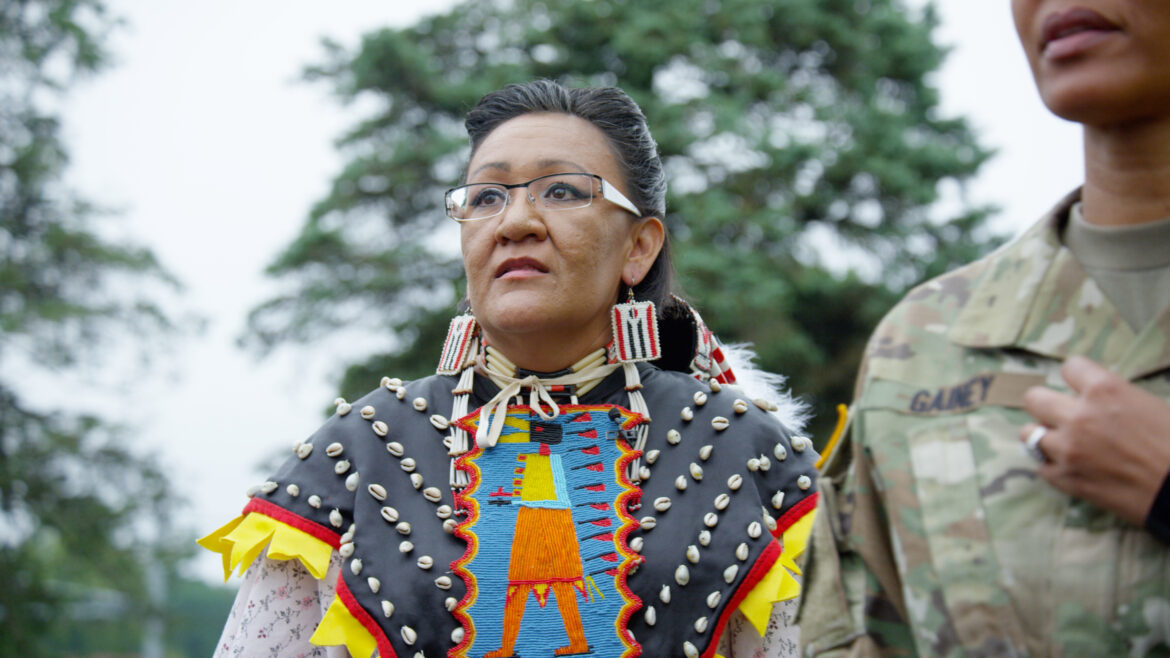Study finds greater racial diversity in public TV documentaries, both on screen and behind the scenes

Courtesy of Caldera Productions
Yufna SoldierWolf, Northern Arapaho, outside the Carlisle Indian Cemetery in Pennsylvania in the 2021 Independent Lens documentary "Home From School: The Children of Carlisle."
Commercial media outlets are “much more likely” than their public media counterparts to distribute documentaries directed by men and white filmmakers, according to a study by the Center for Media & Social Impact at American University’s School of Communication.
The study found that of the films it analyzed, 29% of public TV documentaries were directed by Black, Indigenous and people of color filmmakers, compared to 17% of films by streaming companies and 13% of docs released by cable distributors.
Similarly, about one in four films on streaming and cable platforms were exclusively directed by women, while 39% of public TV docs were directed by women. Researchers said 8% of public TV films were directed by men and women, compared to 7% for commercial outlets.
“The Lens Reflected” study, while limited in scope, examined 1,232 documentaries that were released from 2014–20. It divided the films into three categories: cable, streaming and public media. The 310 films distributed by cable companies were from CNN Films and HBO Films, the 728 streaming docs were released on Netflix and Hulu, and the 194 public media films premiered on Independent Lens and POV.
Caty Borum, a co-author of the report and CMSI executive director, said researchers selected Independent Lens and POV as representative of public media because the docs produced for the series are more “authorial.”
“Within the public broadcasting machine, Independent Lens and POV are the strands that really feature artists who have had most of the creative vision of their work,” Borum said. “… American Masters and others are largely commissioned. They are heavily executive-produced inside the ranks. We wanted to look at films that are reflected very much from the creative vision of filmmakers.”
As for the streaming and cable companies, Borum said researchers chose Netflix, Hulu, CNN Films and HBO Films because of the volume of documentaries the outlets produced within the time frame. She acknowledged that future studies may need to be expanded to account for the constantly changing broadcast and streaming landscape.
The study found that 66% of commercially distributed films featured white main protagonists while 57% of public media films showcased BIPOC main protagonists. The study also said 52% of commercial docs focused on entertainment topics like travel, sports and true crime, while 75% of public media documentaries covered social issues.
“The hope is that our colleagues in public media see this research and double down on investment in nonfiction work by the most diverse cadre of filmmakers possible,” said Sonya Childress, co-director of Color Congress, an organization working to improve diversity in the documentary field. “This is a market that public media is currently cornering by and large in comparison to both cable and certainly their streaming peers.”
The research should not encourage public media to rest on its laurels, said Childress, who co-wrote the study’s introduction. She said that while public media may be outperforming commercial media, there is still room to improve its content diversity initiatives.
“For public media to uphold its own mission, it has to invest in diverse artists and not simply programs,” Childress said. “There’s a touting of the diversity numbers that come out of public media, but if you consider the amount of qualified and supported filmmakers of color and women who are in the pipeline, the numbers should bear out a much higher rate that matches the number of people who are in the pipeline.”
Current is an editorially independent service of American University’s School of Communication.





